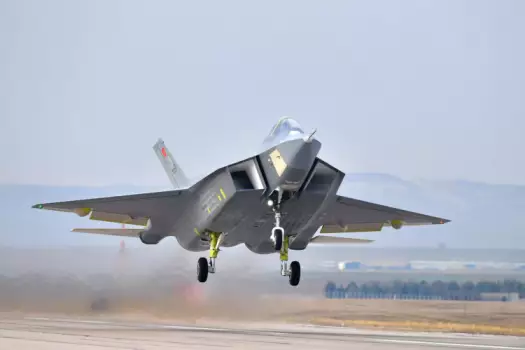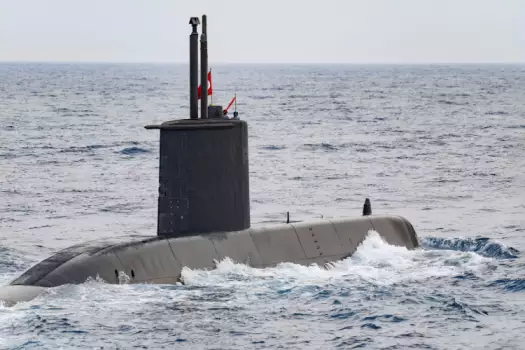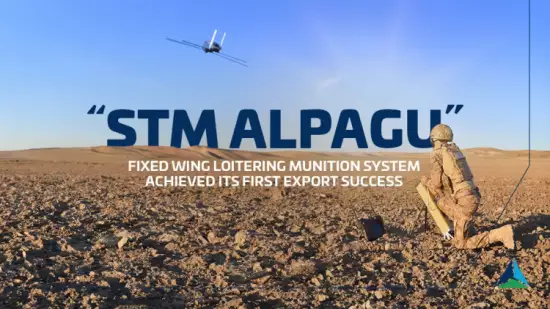Second Export Success of KARGU with Armour-Piercing Warhead

STM has signed its second international sales contract for KARGU UAVs equipped with armour-piercing warheads. More than 10 countries are actively using KARGU, a combat-proven rotary-wing loitering munition system with anti-personnel warheads.
STM, a leading company in the Turkish defence sector, has achieved a new milestone in the international sales of its modern tactical mini UAV systems. STM develops modern and rapid solutions for the evolving battlefield. Last year, STM succeeded in integrating an armour-piercing warhead into KARGU, Türkiye’s first national attack UAV, developed using national capabilities, further enhancing its contributions to the fight against terrorism. After an intense development phase, the armour-piercing KARGU was thoroughly tested and demonstrated pinpoint accuracy in hitting its targets. Following its success in the test field, the first export contract for the armour-piercing version of KARGU was signed in the past months, and now the second export contract has also been finalized.
STM's General Manager, Özgür Güleryüz, stated, “We have signed the second export contract for KARGU UAVs equipped with armour-piercing warheads. As with the first export, the second international customer for the armour-piercing KARGU is also an active user of the anti-personnel warhead version. This once again demonstrates the reliability and performance of KARGU. Discussions with various countries are ongoing, and we look forward to sharing new export news soon.”
UAV of Choice in More than 10 Countries on Three Continents
The KARGU, Combat Proven Rotary Wing Loitering Munition System, known also as the “Kamikaze UAV”, has been developed by STM by using national capabilities. Since entering the TAF inventory in 2018, KARGU has been employed effectively in counter-terrorism, cross-border and other special operations by various Turkish security elements. After attracting attention in the international arena, KARGU achieved its first export success in 2021, and by 2024 it had been exported to more than 10 countries on three different continents.
Different Ammunition Options
Military personnel in the field will be able to quickly remove the anti-personnel ammunition warhead from KARGU and replace it with an armour-piercing warhead when required in the battlefield. KARGU’s efficacy against individual and grouped hostile elements with its anti-personnel ammunition warhead has long been known, and it can now be deployed against mobile and stationary land-based targets, durable structures and armoured land vehicles with its armour-piercing warhead.
Low Radar Cross Section
KARGU can be easily carried by a single soldier and launched against its target in just 1 minute, remaining undetected due to its low radar cross-sectional area. The KARGU Attack UAV benefits from a significant surprise effect and operational superiority due to its artificial intelligence and image processing capabilities, silence and its ability to deploy its explosive payload directly on target. The KARGU system, which comprises an Attack Drone Platform and the Mobile Ground Control Station, can perform effective operations day and night with its advanced electro-optical and infrared cameras. The UAV can stay airborne for more than 30 minutes and has a range of 10 kilometres. It has mission-abort, return-to-home and self-destruct functions, and operates with high-performance navigation and control algorithms. KARGU is integrated with technologies allowing it to operate in swarm configurations and independently of GPS with the KERKES Project.
Man-in-the-Loop Principle
KARGU’s mission computer facilitates fully automatic navigation, allowing KARGU to be deployed for the detection and neutralisation of threats in high-risk/high-threat areas, alleviating the need to deploy human elements. Operating completely under the control of the operator in line with the “Man-in-the-Loop” principle, KARGU provides reconnaissance, surveillance and intelligence to the user, who can opt to make use of its precision-strike capabilities after detecting and confirming the target location in high-risk, complex conflict zones.




